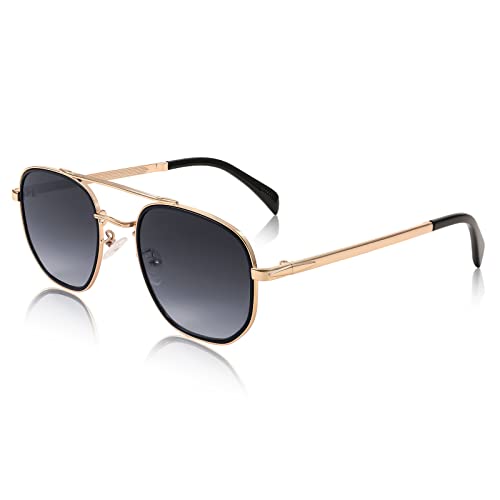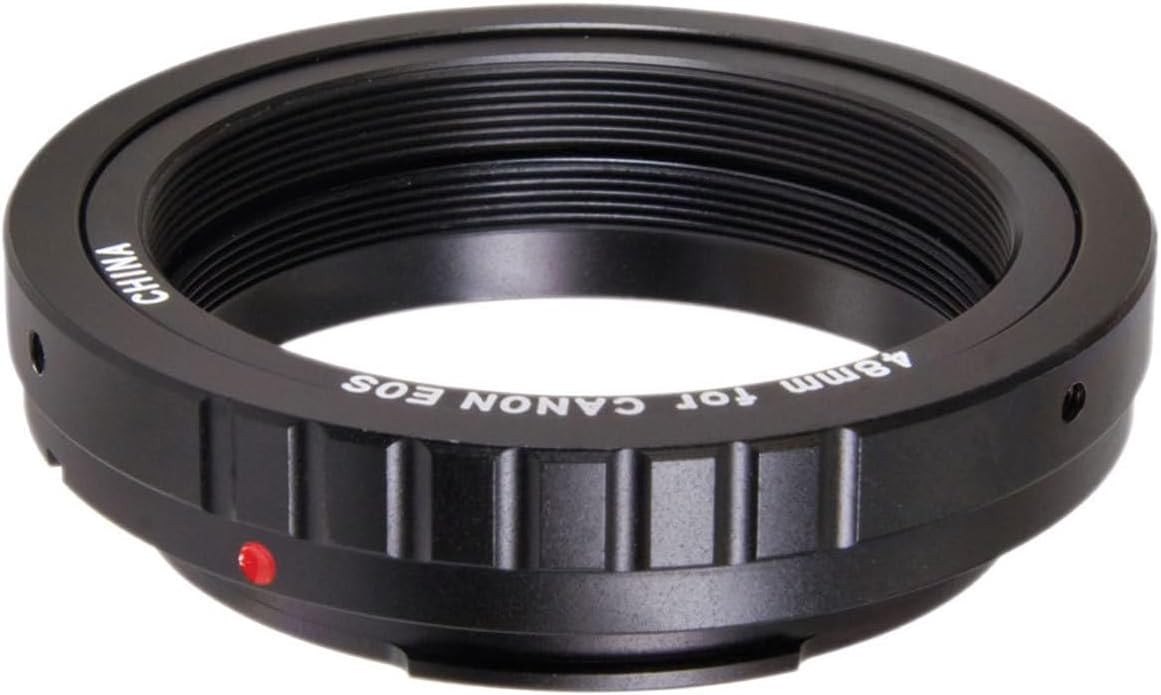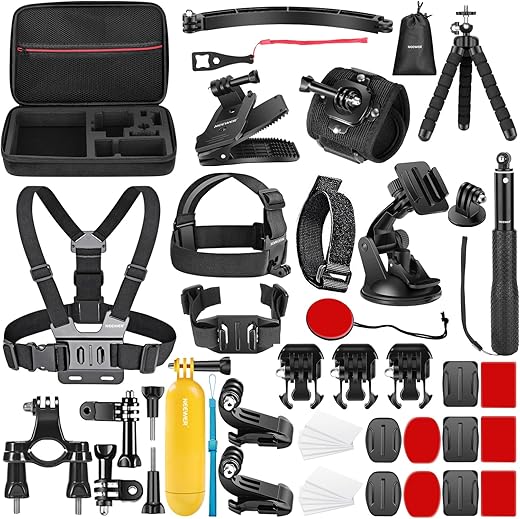
How to tell if retro sunglasses are polarized?
This step-by-step guide will help you determine if your retro sunglasses are polarized, allowing you to reduce glare and improve visibility in bright conditions.
Must-have shades for vintage lovers



Step 1: Examine the sunglasses
- Examine the sunglasses closely for any markings or labels that indicate polarization.
- Look for terms like ‘polarized’ or ‘UV protection’ on the lenses or frames of the sunglasses.
- Check if there are any symbols or logos that signify polarization.
- Take note of any other information or labels present on the sunglasses that may pertain to their functionality or protection.
Remember, inspecting the sunglasses for these markings will help you determine if they offer polarization or UV protection.



Step 2: Check for a polarized test card
- Check if your retro sunglasses come with a case or packaging.
- Look for a small piece of plastic with lines or patterns, which is usually a polarized test card.
- Hold the sunglasses in front of the card.
- Rotate the sunglasses to see if the lines or patterns on the card appear clearer and darker when viewed through the lenses.
- If the lines or patterns look clearer and darker, it means that your sunglasses are polarized.
Step 3: Observe reflected light
- Find a reflective surface, such as a glass tabletop or a shiny car hood.
- Hold the sunglasses at a 60-degree angle and look at the reflection.
- Observe the reflection without the sunglasses to establish a baseline.
- Put on the sunglasses and look at the reflection again.
- Notice that if the lenses are polarized, the reflected light will appear dimmer and less intense compared to viewing the reflection without the sunglasses.
- Repeat the process with different angles and surfaces to gain a deeper understanding of how polarized sunglasses affect the reflection.



Step 4: Test with an LCD screen
- Turn on your smartphone or find an LCD screen, such as a computer monitor or TV.
- Put on the retro sunglasses provided in the kit.
- Tilt your head to various angles while looking at the LCD screen.
- Observe any changes in the screen’s brightness or the appearance of a rainbow-like effect, known as a ‘rainbow pattern.’
- If you notice a change in brightness or a rainbow pattern, it indicates that the lenses of the sunglasses are polarized.
- Conversely, if you do not observe any change in brightness or the appearance of a rainbow pattern, it suggests that the sunglasses are not polarized or may not be functioning correctly.
By following these steps, you will be able to determine whether the retro sunglasses provided in the kit have polarized lenses.
Step 5: Use a polarized lens tester
- Obtain a polarized lens tester, if available.
- Position the retro sunglasses within the designated tester slot.
- Apply pressure on the button to initiate the analysis.
- Observe as the device evaluates the lenses by examining the light that passes through them.
- Determine whether the lenses are polarized or not based on the tester’s findings.
By following these simple steps, users can easily assess whether their retro sunglasses possess polarized lenses or not using a polarized lens tester.



Step 6: Seek professional assistance
If you’re still unsure about the polarization of your retro sunglasses, take them to an optician or sunglasses store. Allow the professionals to use their specialized tools to accurately measure the polarization of the lenses. This will ensure that you have the correct information and can make informed decisions about the functionality and performance of your sunglasses.
Step 7: Compare with known polarized sunglasses
Compare your retro sunglasses with another pair of known polarized sunglasses if you have them. Put on one pair of sunglasses and then switch to the other, paying attention to any differences in visual clarity, glare reduction, and color perception. Notice if the polarized lenses on your retro sunglasses provide enhanced clarity and reduce glare more effectively than the other pair of sunglasses. This comparison will help you evaluate the quality and effectiveness of your retro polarized sunglasses.
Step 8: Perform a water test
- Fill a glass with water and place it on a flat surface.
- Put on your retro sunglasses.
- Hold the glass at eye level and look at it from different angles.
- Observe the glass through the lenses of your sunglasses.
- Notice whether the glass appears darker or has reduced glare when viewed through the sunglasses.
- If the lenses are polarized, you will observe these changes in the appearance of the glass.
- Take note of the results to determine if your retro sunglasses have polarized lenses.
By following these steps, you can easily perform a water test using your retro sunglasses.
Step 9: Consult the manufacturer's information
Refer to the manufacturer’s website or product information. Look for a section that provides details about the sunglasses’ features. Check if the sunglasses are polarized by reading the description or specifications. For instance, if you are considering buying a pair of Ray-Ban sunglasses, visit their website and navigate to the product page of the sunglasses you are interested in. Look for information about polarization, such as “polarized lenses” or “100% UV protection.” If the sunglasses are polarized, the manufacturer will typically highlight this feature in their description or specifications.
Understanding Polarization
In conclusion, determining if retro sunglasses are polarized is a simple process that can be done at home. By following the steps outlined in this post, you can easily confirm whether your sunglasses have polarized lenses or not. Enjoy the enhanced visibility and reduced glare that polarized sunglasses provide, and make the most out of your retro eyewear.
Choosing Polarized Sunglasses
Quickly Determine if Sunglasses are Polarized in 3 Seconds!
Using Retro Sunglasses: Step-by-step Guide
- Choose the right style: Explore different retro sunglasses styles such as cat-eye, aviator, round, or oversized frames, and select the one that suits your face shape and personal preference
- Protect your eyes: Ensure that the retro sunglasses you choose have UV protection to shield your eyes from harmful sun rays
- Coordinate with your outfits: Retro sunglasses can act as a fashion accessory, so try to match them with your outfits to create a stylish and cohesive look
- Adjust the fit: Ensure that the sunglasses fit comfortably on your face. If needed, adjust the nose pads and temples to achieve a secure and comfortable fit
- Care and maintenance: Keep your retro sunglasses clean by using a microfiber cloth, and store them in a protective case when not in use to prevent scratches or damage
Frequently Asked Questions about Retro Sunglasses
Are there any specific care instructions for maintaining retro sunglasses?
Yes, there are specific care instructions for maintaining retro sunglasses. To keep them in good condition, it is advisable to follow these instructions:
- Cleaning: Use a soft, lint-free cloth or lens cleaning solution specifically designed for eyewear to clean the lenses. Avoid using paper towels or abrasive materials to prevent scratching.
- Storage: Keep your retro sunglasses in a protective case when not in use. This will prevent them from getting scratched or damaged.
- Handling: Avoid touching the lenses with your fingers as this can leave smudges or oils. Use the temples or frames to put them on or take them off.
- Sun exposure: Retro sunglasses often have colored or mirrored lenses that may fade over time if exposed to direct sunlight for extended periods. When not wearing them, you can store them in a cool and dry place away from direct sunlight.
- Avoid extreme temperatures: Do not expose your retro sunglasses to extreme heat or cold as this can cause damage to the frames or lenses.
Are retro sunglasses available in a variety of colors and patterns?
Yes, retro sunglasses are available in a variety of colors and patterns. These sunglasses often feature vibrant hues such as red, blue, yellow, and green, as well as classic colors like black and white. Additionally, they may come in patterns like leopard print, tortoiseshell, floral motifs, and polka dots, among others. The wide range of colors and patterns available allows individuals to choose retro sunglasses that suit their personal style and preferences.
How do retro sunglasses differ from modern sunglasses?
Retro sunglasses and modern sunglasses differ in several ways. Here are a few notable distinctions:
- Style: Retro sunglasses typically draw inspiration from a specific era, often the 1950s to 1980s, and feature bold designs with exaggerated shapes and colors. In contrast, modern sunglasses lean towards minimalism and sleek aesthetics, often incorporating cutting-edge materials and designs.
- Frame Materials: Retro sunglasses often feature frames made from materials like acetate or metal, while modern sunglasses may incorporate a broader range of advanced materials like titanium, carbon fiber, or even wood.
- Lens Technology: Modern sunglasses usually incorporate advanced lens technologies to provide superior protection and clarity. These may include polarized lenses to reduce glare, photochromic lenses that darken in response to light, or lenses with specialized coatings for UV protection and scratch resistance. Retro sunglasses generally have simpler lenses without these advanced features.
- Size and Shape: Retro sunglasses typically feature larger frames and bolder shapes, like cat-eye, round, or oversized square frames. On the other hand, modern sunglasses come in a variety of sizes and shapes, ranging from classic aviators to small minimalist frames.
- Branding and Logo Visibility: Retro sunglasses often feature prominent branding, with logos displayed on the temples or lenses. In contrast, modern sunglasses often emphasize a more subtle and understated branding approach.
- Popularity and Availability: Retro sunglasses have gained popularity in recent years due to their nostalgic appeal. Many modern sunglasses are produced by popular brands that release new designs frequently, making them more widely available through various retailers and online platforms.





